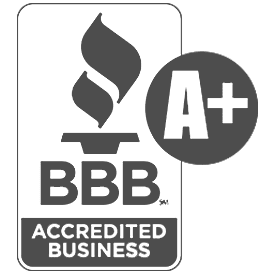Before Forbearance, Try This
If you are experiencing the latter and are considering mortgage forbearance, keep reading.
For educational purposes only; individuals should contact their loan servicer for specific program guidance.
Many borrowers are returning to work and financial stability as our economy continues to fluctuate. Despite this, people are either still struggling, or beginning to struggle financially. If you are experiencing the latter and are considering mortgage forbearance, keep reading. You may have better options to consider first.
Forbearance
The CARES Act provides that people facing COVID 19-related financial hardships may seek mortgage forbearance. It may seem like a welcome relief, but that doesn’t necessarily mean it’s the right choice for everyone.
Forbearance allows borrowers to pause mortgage payments for a 90-day period in order to make other financial arrangements or keep afloat. It neither changes the existing balance, nor erases the three months of paused payments. Borrowers are simply electing to make those payments at a later date.
Before the forbearance period ends, borrowers and their loan servicers will have to decide how to repay the last 3 months of payments. The options will depend on the existing loan, protections provided, and perhaps even the loan servicer. To better understand what repaying forbearance mortgage payments will look like, borrowers should directly contact their loan servicer.
The Downsides
While the CARES Act promises that credit scores will not be impacted by mortgage forbearance, being in forbearance can still be harmful: it can impact one’s ability to qualify for a new loan or a refinance in the future, for example. Interest will continue to accrue on the payments borrowers have paused, so there will not be any “savings” in this decision. If anything, after forbearance ends, one may have an even higher monthly mortgage payment.
Forbearance may not be the right option for someone who was already struggling to make payments before the pandemic hit. Luckily, there are plenty of other options to look at first.
Your Other Mortgage Relief Options
Because participating in mortgage forbearance can be complicated and stressful, we suggest exploring all available options first. We can help borrowers with either of the two below:
Traditional Refinance
The rates we’re seeing now are some of the lowest in history! You could be saving money with lower monthly payments.
Cash Out Refinance
Similar to the traditional refinance, you can seek to lower your interest rate but with the added bonus of pulling cash out. This cash can be used to pay off some bills or anything else you may need right now.
Read more about the cash out refinance option here.
Borrowers could also do any of the following, some with the help of their current lender:
Eliminate Your PMI
Borrowers can get rid of monthly PMI payments once enough of the mortgage is paid off to gain at least 20 percent equity. Once you do so, you can reach out to your lender to request dropping the PMI, and if it is successfully removed, you will be left with lower monthly payments.
Read more about PMI here.
Tax Assessment Redo
If you think your home may be overvalued and you have an escrow account, you might want to request to have your tax assessment redone. Your county’s assessment of your property value could be inaccurate and thus be keeping your taxes too high. This process can be tedious as you have to request a redo of your assessment and a hearing with the State Board of Equalization for approval.
Summary
While times are tough, you are welcome to seek out a forbearance on your mortgage if it would be the best choice for you. Everyone’s financial situation is unique and thus has different needs. That said, it’s worth taking the time to explore all your options before committing to a forbearance, as it can be fairly difficult to start making repayments after it ends.
To get started with a traditional or cash-out refinance, give us a call at 888-749-9595 or start an online application here today!




